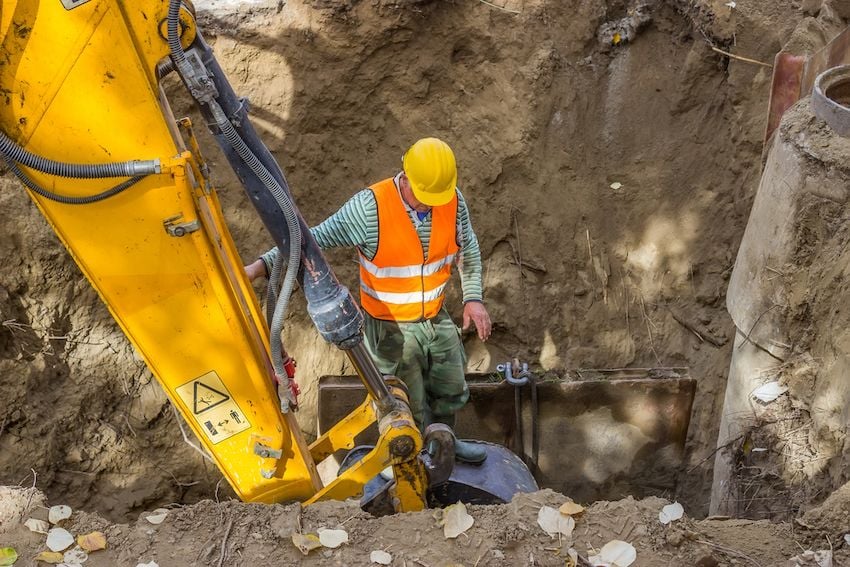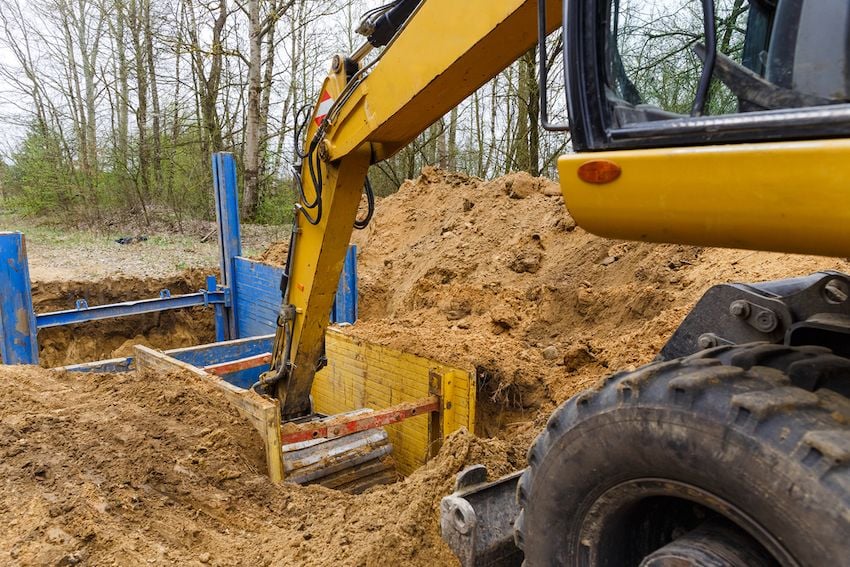Protecting underground facilities from third-party excavation accidents is no small feat. Even after locating and marking, facilities are vulnerable to strikes, often due to improper excavation methods, like digging within the tolerance zone.
Educating excavators about safe digging laws and best practices, proactively contacting excavators before they start digging, and even dispatching knowledgeable representatives to oversee excavation work are all proven to help reduce third-party damages to underground facilities. In the recent Urbint panel discussion “Deliberate Digging: Utility Protection Program Best Practices,” five damage prevention experts discussed these tactics in greater detail, sharing what they’ve learned about engaging with professional excavators through years of first-hand experience.
The panel was moderated by Brad Roulo, Urbint Director of Utility Operations and former damage prevention manager at Nicor Gas, and the panelists included:
- Nick Bonstell, Emergency Manager, SEMCO Energy
- Ian Jones, Damage Prevention Supervisor, Baltimore Gas & Electric (BG&E)
- David Smith, Damage Prevention Superintendent, Ameren
- Meghan Wade, President and CEO, Georgia 811
Read on for their insights, so you can improve your utility protection program and stop damages before they happen.
4 utility protection program best practices
1. Establish trust with excavators
It’s not uncommon for excavators to be wary of utility company representatives who visit their job sites, particularly if they’ve clashed over facility damages in the past. For a utility protection program to be successful, however, damage prevention teams need to find ways to earn excavators’ trust, Roulo said.
“Building relationships, camaraderie, and friendships with the excavating community is hugely important to moving the needle on overall damages,” he said. “We can provide our field staff with scripts on what they need to tell an excavator to incentivize behavior. But, at the end of the day, if there isn't trust built up between the excavator and the technician on the job site, those efforts fall flat.”
Smith agreed, noting that partnerships built on trust are particularly helpful in times of disagreement.
“Relationships [with excavators] can be stressful when damages occur and they feel they are not at fault,” he said. “To keep the relationship with excavators, we’re open to sitting down with them and sharing the evidence we have from our investigation, so they understand how we came to the decision that they were responsible. We still may disagree at the end of that meeting, but we’ve shown that we have respect for them.”
2. Make it easy for excavators to get in touch
The panelists agreed it should be easy for excavators to quickly get in direct contact with a utility’s damage prevention team. BG&E has a single hotline for its damage prevention unit for this express purpose.
“We created a hotline number where [excavators] can speak directly to one of our inspectors,” Jones said. “They’re not calling the general BG&E line where they talk to a customer service rep, and then going down the chain.”
“A hotline is brilliant,” Wade said. “Just please be sure to share it with your 811 center, because we will get the calls if excavators cannot get in touch with the utility.”
At Ameren, members of the Damage Prevention Department give excavators their direct lines. “We share our contact information, so if [excavators] ever have issues with our facilities, they’re not out there wondering, ‘Is this issue getting resolved?’ We get back to them and give them a timeline,” Smith said.
Excavators don’t exclusively contact Ameren damage prevention representatives with issues, either. According to Smith, they also report unsafe digging. “Excavators actually call us saying, ‘I see somebody out here digging. They don’t have flags, and I know you have facilities there,’” he said.
Check out: 4 Steps For Successful Field Interventions For Gas Utilities
3. Prioritize excavation sites for intervention
Ticket volume has increased dramatically in recent years, making it more difficult for utilities to locate and mark their facilities in the required number of days, let alone take other proactive steps to prevent damages. “The majority of [utilities] are experiencing a 20 to 40 percent increase in overall ticket volume but are at the same staffing level or maybe a slightly elevated staffing level,” Bonstell said. “You have to figure out how you’re going to use your limited resources to make the biggest impact.”
To ensure they are making the most of their resources, SEMCO uses Urbint for Damage Prevention, a software solution that uses artificial intelligence to identify excavation projects that are most likely to result in damage. With Urbint for Damage Prevention, Bonstell can quickly see where he should send members of the emergency management team to meet with excavators or supervise digging.
“We prioritize [site interventions] based on risk. We take into consideration inputs like past performance of excavators, the proximity of other utilities, and the excavation ground type. We start with the highest risk, and then move down the list,” he said.
Look: How Gas Utilities Use Artificial Intelligence Technology for Damage Prevention
BG&E also prioritizes sites for intervention, though the utility primarily focuses their efforts on large transmission and distribution lines.
“We’re looking at any high-pressure gas main that's eight inches [in diameter] or larger,” Jones said. “After our locator identifies the facilities, we work with the excavator to schedule a Watch and Protect standy. Our inspectors make sure the marks are accurate, verify how close the excavator is going to be to the facility, and, if they’re going to be within a certain footage, we’ll actually have someone on site with them making sure they’re prudently digging.”
4. Take advantage of all of your available resources
Even with advances in technology, there may be times it’s not possible for a utility’s damage prevention team to intervene on all high-risk or high-consequence excavations. In times like these, look outside of your immediate team to see what other resources you have available, Roulo said.
“Use whatever resources you have at your disposal as best as possible,” Roulo said. “Locators can conduct remote contact with excavators. They can make that initial contact with the excavator to tell them, ‘Hey, we have a critical asset here.’”
Don’t forget about your local One Call center, either, Wade reminded. “Reach out to your One Call. There are things we could work on for you, so you can get your boots to those critical locations. [For example], we can do broad education about dig laws and tolerance zones. It’s part of what your membership is for.”
Read: 4 Things One Call Centers Want Utilities to Do
For more insights from these damage prevention experts, watch the full recording of “Deliberate Digging: Utility Protection Program Best Practices.”

